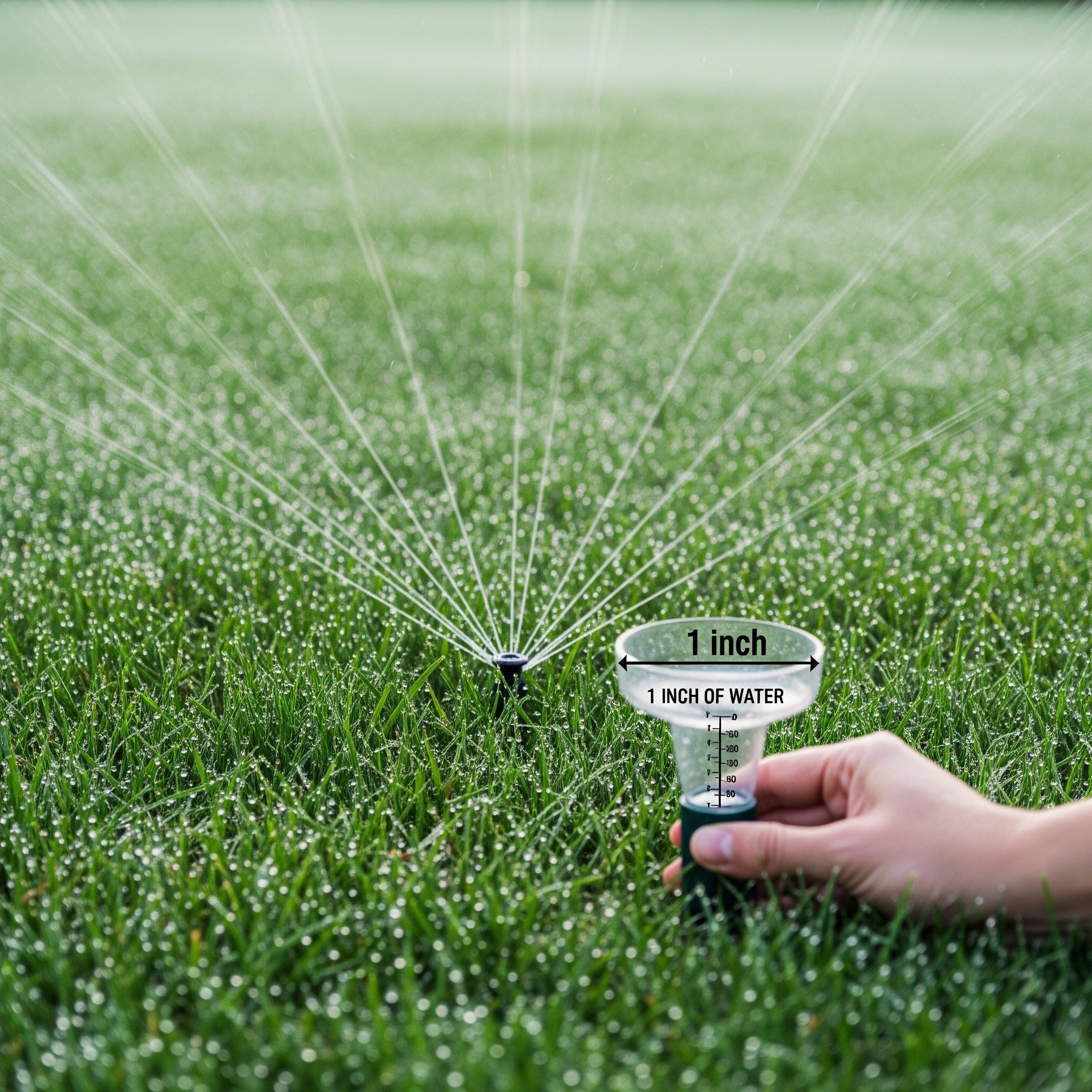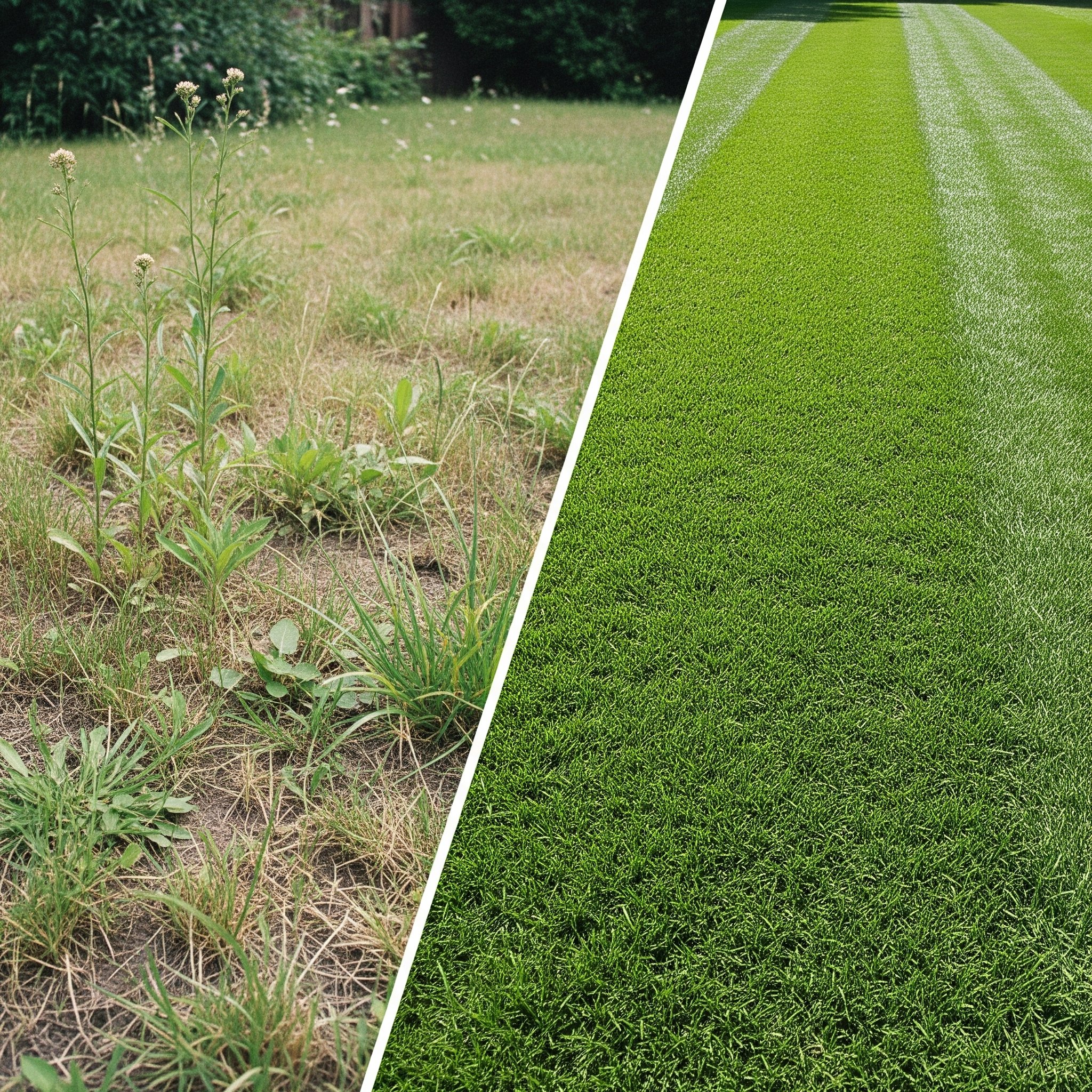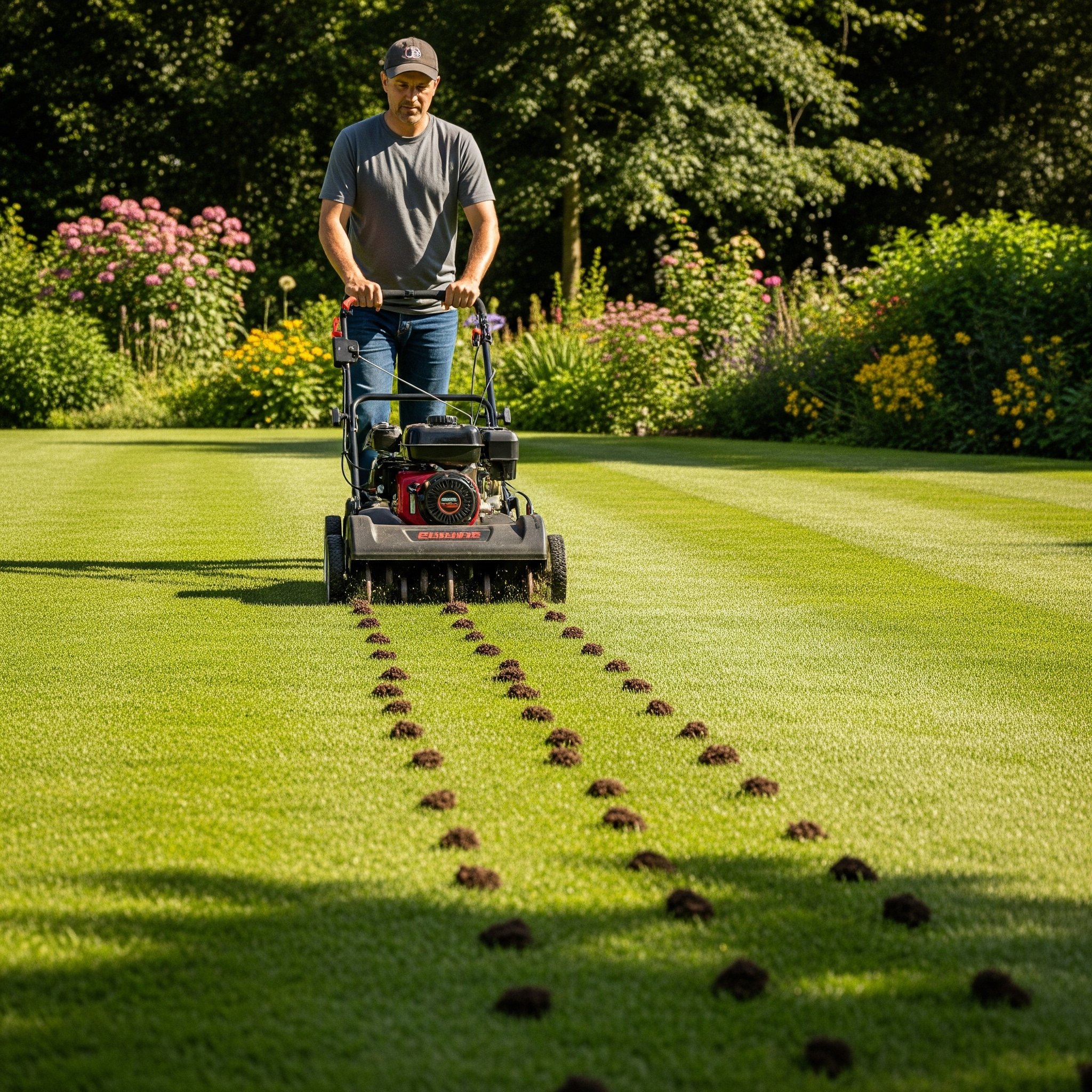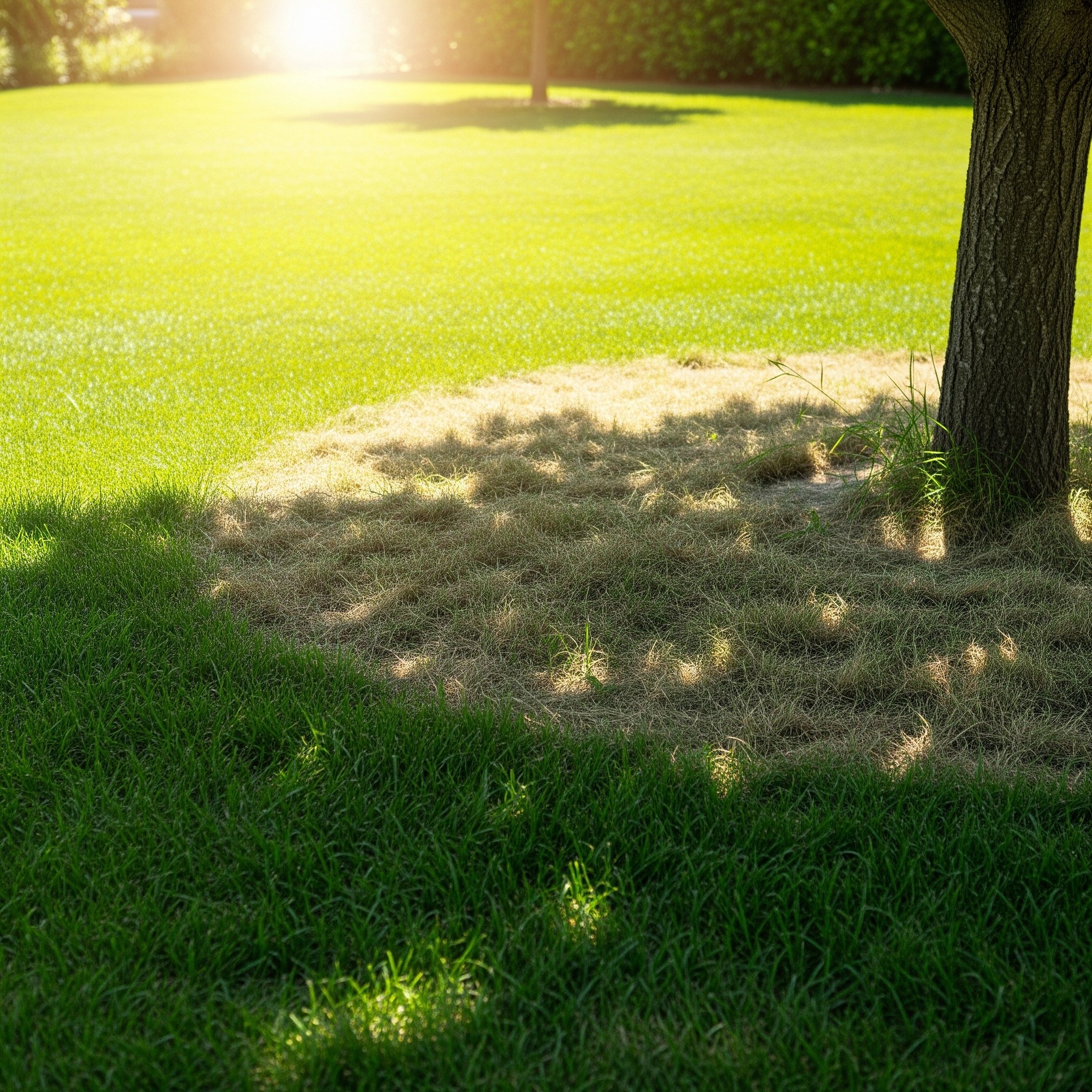The Ultimate Guide to a Thriving Bermuda Lawn: 7 Essential Tips
Cultivating a lush, resilient Bermuda grass lawn in the hot, dry climate of Fresno, Clovis, and the surrounding Central Valley requires specific strategies. By understanding your local conditions and implementing these core practices during the active growing season, you can achieve a dense, healthy, and surprisingly low-effort lawn that stands up to the Central Valley heat.
1. Mow Frequently & Low (with Fresno/Clovis in Mind)
Bermuda grass thrives on a low cut, which encourages it to spread laterally and form a dense carpet, effectively choking out many weeds. In the Central Valley, where Bermuda is actively growing from early spring (when soil temperatures consistently hit 55°F, typically March/April) through late fall, frequent mowing is key.
Height: Aim for a mowing height of 1 to 1.5 inches. This is lower than most cool-season grasses, so adjust your mower accordingly.
Frequency: During peak summer growth (June-August), you might need to mow 2-3 times per week to avoid removing more than one-third of the blade height at a time. This prevents scalping, which stresses the grass.
Sharp Blade: A sharp blade makes a clean cut, reducing stress on the grass and preventing frayed tips that can brown. Dull blades tear the grass, making it more susceptible to disease.
Product Recommendations: For the low cut required by Bermuda, a reel mower is often preferred by enthusiasts as it cuts grass like scissors, resulting in a cleaner cut than rotary mowers.
Manual Reel Mower: Great for smaller lawns, eco-friendly, and provides a good workout. Look for models from brands like Scotts, American Lawn Mower Company, or Fiskars.
Powered Reel Mower: For larger lawns, these offer the precision of a reel mower with less effort. Brands like McLaughlin, Tru-Cut, or California Trimmer are popular among serious lawn care enthusiasts, though they are a significant investment.
Rotary Mower (set low): If a reel mower isn't feasible, ensure your standard rotary mower can safely be set to 1-1.5 inches. Keep the blade sharpened regularly (you can do this yourself with a sharpening kit or take it to a local hardware store/small engine repair shop).
2. Water Deeply, Infrequently (Following Clovis Water Restrictions)
Efficient watering is critical in the Central Valley's arid climate, especially with local water conservation efforts. The goal is to encourage deep root growth, which makes your Bermuda lawn more drought-tolerant.
Timing: Always water in the early morning (before 8 AM). This minimizes evaporation in the hot sun and allows the grass blades to dry before nightfall, reducing the risk of fungal diseases.
Amount: Bermuda generally needs about 1 inch of water per week, including rainfall. You can determine how long it takes your sprinkler to deliver an inch by placing tuna cans or rain gauges around your lawn and running the sprinklers for a set time, then measuring the collected water.
Frequency (Crucial for Clovis/Fresno): Adhere strictly to local watering schedules. For Clovis & Fresno residents (April 1st - October 31st), outdoor watering is limited to three days per week based on your address:
Odd-numbered addresses: Tuesdays, Thursdays, and Saturdays only.
Even-numbered addresses: Wednesdays, Fridays, and Sundays only.
No outdoor water use on Mondays.
Reduce run times to avoid runoff onto hardscapes.
Avoid Frequent Shallow Watering: This promotes shallow roots, making your lawn more vulnerable to heat stress and less able to access deeper soil moisture.
Product Recommendations:
Oscillating Sprinklers: Good for even coverage over rectangular areas. Look for adjustable models from brands like Melnor, Gardena, or Husky (available at Home Depot/Lowe's).
Impact Sprinklers: Best for larger, circular areas. Brands like Rain Bird or Orbit offer robust options.
Smart Irrigation Controllers: These can be a game-changer for water conservation. Controllers from Rachio, Orbit B-hyve, or Hunter Hydrawise can connect to local weather forecasts and adjust watering schedules automatically, helping you adhere to restrictions and water efficiently.
Rain Gauge/Catch Cups: Essential tools for measuring your sprinkler's output. Simple plastic rain gauges or sets of catch cups are inexpensive and widely available.
3. Fertilize During Growth (Targeting Central Valley Seasons)
Fertilizing at the right time provides the necessary nutrients for Bermuda's vigorous growth. In the Central Valley, Bermuda's active growing season extends from mid-spring to early fall.
Timing & Frequency:
Mid-Spring (March/April, when grass is 50% green and frost danger passed): Apply a nitrogen-rich, slow-release fertilizer. This is your first major feeding to kickstart growth. Look for NPK ratios like 16-4-8, 29-0-5, or similar, where the first number (Nitrogen) is highest.
Mid-Summer (late June/early July): A second application of a nitrogen-heavy, slow-release fertilizer.
Early Fall (late August/early September): A third application. Consider a fertilizer with higher potassium (K) and lower phosphorus (P) to help with root development and winter hardiness, such as a 12-0-12 or 12-4-14 blend. Avoid high nitrogen late in the fall as it can encourage new growth that's vulnerable to upcoming cold.
Don't Over-fertilize: Too much fertilizer can burn your lawn and promote excessive top growth at the expense of root development. Always follow the product recommendations based on your lawn size.
Slow-Release Nitrogen: This is crucial. Slow-release forms provide a steady supply of nutrients over 2-3 months, reducing the risk of nutrient burn and promoting sustained, healthy growth.
Product Recommendations: Look for fertilizers specifically labeled for "Bermuda grass" or "warm-season lawns." Common brands include:
Scotts Turf Builder Southern Lawn Food (often has high nitrogen and slow-release components)
Milorganite (an organic, slow-release nitrogen source, great for soil health)
Lesco Professional Fertilizer (often found at local landscape supply stores, known for quality and various NPK blends)
The Andersons Professional Lawn Products (e.g., granular fertilizers with different NPK ratios, available online or at specialty stores).
4. Prevent Weeds (Fresno's Common Culprits)
A dense, healthy Bermuda lawn is your primary defense against weeds. However, pre-emergent herbicides are an excellent proactive measure, especially against common Central Valley weeds like crabgrass, nutsedge, dandelion, and spurge.
Pre-Emergent Application:
Early Spring (February/March): Apply a pre-emergent herbicide when soil temperatures are consistently above 50-55°F. This targets weeds like crabgrass before they germinate.
Late Fall (October/November): A second application helps control winter annuals and some perennial weeds.
Product Selection: Ensure the pre-emergent is safe for Bermuda grass.
Post-Emergent Control: For existing weeds not stopped by pre-emergent, spot treat with a post-emergent herbicide. Be sure it's safe for Bermuda grass and targets the specific weed. Many broadleaf weed killers are safe for Bermuda. For grassy weeds like nutsedge, you'll need a specialized product.
Product Recommendations:
Pre-Emergent Herbicides (containing Prodiamine or Dithiopyr):
Prodiamine 65 WDG: (e.g., from The Andersons or other professional brands) is a popular choice for warm-season grasses. It's often available in granular or wettable disperse granule (WDG) forms.
Dimension (Dithiopyr): Another effective pre-emergent, also available in granular or liquid.
Scotts Halts Crabgrass & Grassy Weed Preventer: A widely available granular option at home improvement stores.
Post-Emergent Herbicides (for Bermuda-safe broadleaf):
Spectracide Weed Stop for Lawns Plus Crabgrass Killer for Southern Lawns
Ortho WeedClear Weed Killer for Lawns (Southern)
For Nutsedge: Look for products containing active ingredients like Sulfentrazone or Halosulfuron-methyl (e.g., SedgeHammer Plus, Ortho Nutsedge Killer for Lawns).
5. Aerate Annually (Relieving Central Valley Compaction)
Fresno and Clovis often have clay-heavy soils which are prone to compaction, especially with heavy foot traffic or overhead irrigation. Compaction restricts air, water, and nutrient movement to the roots.
Timing: The best time to aerate Bermuda grass in the Central Valley is summer, during its peak growing season (June-August). This allows the grass to quickly recover from the aeration process. Some local services also recommend early spring or early fall.
Type: Core aeration, which removes small plugs of soil, is generally more effective than spike aeration.
Benefits: Aeration improves water infiltration, allows fertilizer to reach the root zone more effectively, enhances air exchange, and promotes stronger root development.
Product Recommendations:
Manual Core Aerator: For smaller lawns or spot treatment. Look for sturdy models with hollow tines. Brands like Landzie or various unbranded options on Amazon/Home Depot.
Tow-Behind or Push Core Aerator (Rental): For larger lawns, renting a core aerator from a local equipment rental store (e.g., Home Depot Tool Rental, Lowe's Tool Rental, or local independent rental shops in Fresno/Clovis) is a cost-effective option.
Professional Service: Many local landscaping companies in Fresno and Clovis offer aeration services. This is a convenient option if you prefer not to do it yourself.
6. Full Sun Only (Non-Negotiable for Bermuda in the Valley)
This tip is non-negotiable for Bermuda grass, especially in the Central Valley's intense sun.
Sunlight Needs: Bermuda absolutely requires at least 6-8 hours of direct, unfiltered sun daily.
Shade Impact: In shaded areas, Bermuda will thin out, become leggy, and struggle to compete with weeds and diseases. It will simply not thrive.
Alternative Grasses for Shade: If you have significant shade, consider alternative grass types like St. Augustineor Tall Fescue (though Tall Fescue is a cool-season grass and has different water/fertility needs than Bermuda).
No specific product recommendations here, but rather a planning consideration: If you have shady spots, consider converting them to shade-tolerant groundcovers, flower beds, or hardscaping rather than battling thin Bermuda.
7. Embrace Dormancy (Winter in Fresno/Clovis)
Bermuda grass is a warm-season grass, meaning it will naturally go dormant and turn a golden-brown color in cooler months (typically November through March/April in the Central Valley). This is normal and healthy.
Reduced Care: During dormancy, significantly reduce both mowing and watering. The grass is not actively growing and doesn't need much.
Avoid Traffic: Heavy foot traffic on dormant turf can cause damage that will be visible when the grass greens up in spring.
Winter Overseeding (Optional): Some homeowners choose to overseed dormant Bermuda with a cool-season grass like perennial ryegrass for winter color. If you do this, you'll need to water and fertilize the ryegrass during winter, and it will eventually die out as the Bermuda re-emerges in spring.
Product Recommendations:
Perennial Ryegrass Seed (for overseeding): If you choose to overseed for winter color, look for "annual" or "perennial" ryegrass seed blends, readily available at garden centers.
Important Local Note on Product Availability: While I've listed common brands and product types, specific models and stock can vary. It's always best to check with your local retailers in Fresno and Clovis, such as:
The Home Depot
Lowe's
Ortho Agri-Supply (a local specialty garden supply store)
Local independent nurseries (they often have knowledgeable staff who can provide region-specific advice).
By consistently applying these tailored tips, you'll be well on your way to cultivating a durable, beautiful, and low-effort Bermuda lawn that stands strong against the Central Valley climate.








